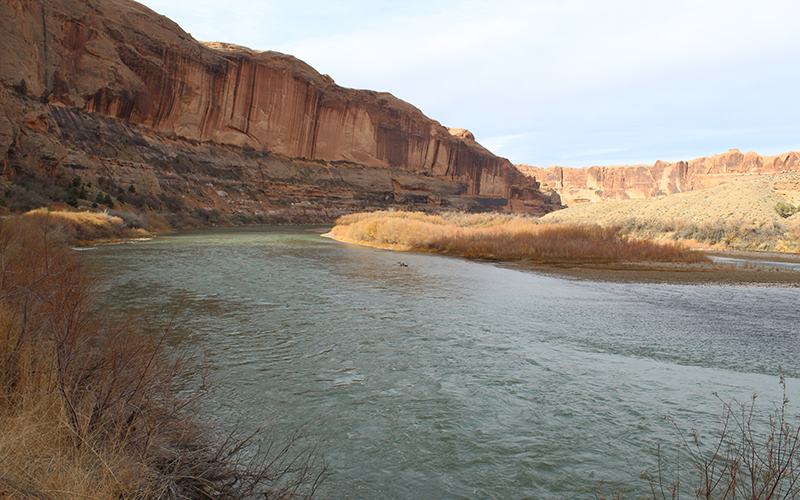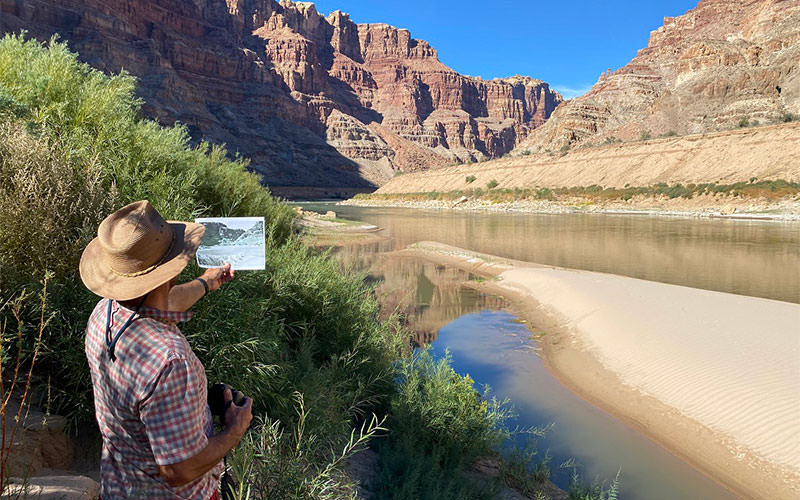Increasingly bleak forecasts for the Colorado River have for the first time put into action elements of the 2019 Upper Basin drought contingency plan.
The 24-month study released in January by the U.S. Bureau of Reclamation, which projects two years of operations at the river’s biggest reservoirs, showed Lake Powell possibly dipping below an elevation of 3,525 feet above sea level in 2022. That elevation was designated as a critical threshold in a 2019 agreement to preserve the ability to produce hydropower at Glen Canyon Dam.
In a letter to water officials in Colorado, Utah, New Mexico and Wyoming, the bureau’s Wayne Pullan and Jacklynn Gould said the “minimum probable” forecast triggers “enhanced monitoring and coordination,” and states were instructed to identify point persons to take part in monthly planning calls. Those meetings have yet to be scheduled.
“It’s really about giving people an advanced warning,” said Eric Kuhn, former general manager of the Colorado River District, and one of the architects of the 2019 hydropower plan.
The forecast in question is called the “minimum probable” forecast, one of the more pessimistic possible futures on the river, which supplies water to 40 million people across seven U.S. states and two in Mexico. But the model makes clear it’s plausible that Lake Powell could see rapid declines within the next two years, Kuhn said, and water managers need to consider all possible scenarios and plan for them.
“We need a cushion, and time to react,” Kuhn said. “So the 3,525 (elevation) was put in as a way to give everyone time to think about what’s happening.”
If federal models show the reservoir’s elevation declining past that threshold under the “most probable” forecast, smaller reservoirs upstream in the four Upper Basin states could release water to prop up Lake Powell. The models don’t yet show that scenario as the likeliest to occur.
A parallel agreement in the river’s Lower Basin – Nevada, California and Arizona – which ties important water cutbacks to the level of Lake Mead south of Las Vegas, was implemented the year it was signed. Under that agreement, some users in Nevada, Arizona and Mexico have had their Colorado River water deliveries curtailed due to sustained dry conditions.
Combined, Lakes Powell and Mead are forecast later this year to hit their lowest levels since the two reservoirs filled decades ago.
As exceptional drought conditions expanded to more than 65% of the watershed’s total land area in 2020, operational forecasts for the Colorado River have worsened dramatically. From October to November 2020, Bureau of Reclamation models projected a possible 1 million acre-foot drop in Lake Powell’s water storage due to lagging snowpack totals and record soil moisture deficits.
“That was the first glimmer we could be looking at this way earlier than we expected,” said Amy Haas, executive director of the Upper Colorado River Commission.
The drought contingency plans place much of the authority to direct the response in the Department of Interior secretary. Although Rep. Deb Haaland, D-N.M., has been nominated for the post, the position is vacant. So, too, is the position of Bureau of Reclamation commissioner, which Haas said means much of the drought response coordination is happening at the regional director level, something the drought contingency plans allowed for.
This story is part of a project covering the Colorado River, produced by KUNC and supported through a Walton Family Foundation grant. KUNC is solely responsible for its editorial content.

